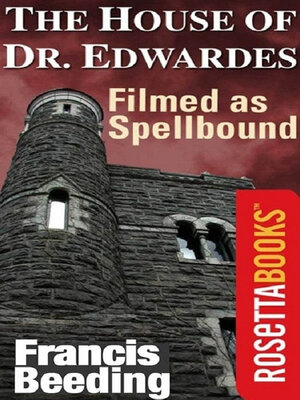
Sign up to save your library
With an OverDrive account, you can save your favorite libraries for at-a-glance information about availability. Find out more about OverDrive accounts.
Find this title in Libby, the library reading app by OverDrive.



Search for a digital library with this title
Title found at these libraries:
| Library Name | Distance |
|---|---|
| Loading... |
A novel of psychological terror set in a mental asylum that became the basis for Alfred Hitchcock's Spellbound starring Ingrid Bergman and Gregory Peck. From the outset, the air that Beeding's characters breathe crackles with ominous electricity. This is surely what appealed to Alfred Hitchcock when he found Beeding's The House of Dr. Edwardes and used it as the inspiration for his unforgettable film Spellbound. The "house" of the title is a lunatic asylum in France and Dr. Edwardes is the head psychiatrist. While Edwardes is held in high esteem, an almost iconic figure in psychiatric circles, there is something clearly amiss. The novel opens with a puzzling, ominous episode in which a patient being transported to the asylum grows agitated as the car bringing him there approaches. The patiently suddenly screams: "the gorge of the devil" and then attacks and kills one of the supervisors, a promising but inexperienced psychiatrist. This opens a position that Dr. Sedgwick accepts, but on arrival, she learns that Dr. Edwardes has taken a leave of absence to calm his nerves. It doesn't take her long to discover that the house is hardly in order. Unlike Hitchcock's Spellbound, The House of Dr. Edwardes owes less to Freud, displaying much closer affinities with the brooding, psychological landscapes of Gothic novels of the eighteenth and nineteenth centuries, particularly Emily Brontë's Wuthering Heights. The result is a compelling work—part mystery, part modern Gothic.







